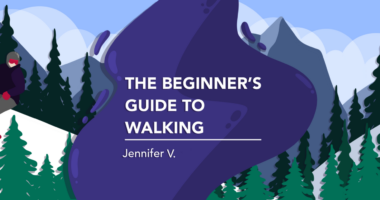Why maintaining good vein health helps me better manage NMOSD
Accessing veins is a necessity in life with NMOSD, so I need healthy ones

Throughout my journey with neuromyelitis optica spectrum disorder (NMOSD), I’ve often overlooked the importance of maintaining good vein health. Because of that, I’ve paid the price by having far too many difficult days.
While we might not think about our veins until there’s an issue, they perform essential functions every day, including keeping our circulatory system running smoothly. For patients like me, maintaining healthy veins can mean the difference between having smooth blood work, infusions, and other treatments or facing unnecessary challenges.
It’s no secret that needles are the bane of my existence, but it’s an expected part of the NMOSD journey. Need to check out your B-cell levels? You’ll need a needle for blood work. Require intravenous steroids or an immunosuppressant drug? Another needle will be inserted into your body. Need an MRI with blue dye so that technicians can get a clear picture of your spine and head? You guessed it — another needle. In all of this, the key to success is having healthy veins, something I’ve always struggled with.
In my early days with NMOSD, I remember being in the emergency room with my first bout of vision loss. I wasn’t in any pain, but everyone around me was panicked on my behalf. While I know better now, back then, I didn’t get what all the fuss was about.
The doctors on call decided I needed an emergency MRI, but they wanted to use a contrast agent, which is administered intravenously. It took 14 attempts for nurses to find a healthy vein. That experience tested my inner strength but also fed my fear of needles.
Last summer, I had several IVs and worried there wasn’t a good vein left. I even developed a small blood clot where the line was inserted on the top of my left hand. It left a small bump that I’ve nicknamed my “accordion vein.”
How to support good veins
The biggest thing I can do to maintain healthy veins is to stay hydrated. I’m not a big water drinker, but I’m working on it. I drink a lot of water both during and after a workout, although I also lose a lot due to sweating. So I’ve found it helpful to set daily goals. Through trial and error, I’ve determined that I need approximately 3 liters of water before I have any type of IV work done. I also eat water-rich foods like watermelon, cucumbers, celery, and apples.
Getting regular exercise is another way I can improve my vein health. Activities like walking, swimming, and cycling promote good circulation. I’ve noticed that when I’m not as active as I should be, I struggle with simple vein tasks like getting blood work done.
In recent weeks, I’ve been focusing on losing weight, including doing intermittent fasting. I’m finally seeing results. My functional nutritionist explained that extra weight can put pressure on my veins, so reducing this strain supports better blood flow.
Good vein health is a vital component of my overall wellness and my NMOSD management strategy. By understanding the importance of it and making proactive lifestyle choices, I can reduce the risk of vein-related setbacks. Taking small steps every day to support my veins makes things a lot easier in the long run.
Note: Neuromyelitis News is strictly a news and information website about the disease. It does not provide medical advice, diagnosis, or treatment. This content is not intended to be a substitute for professional medical advice, diagnosis, or treatment. Always seek the advice of your physician or other qualified health providers with any questions you may have regarding a medical condition. Never disregard professional medical advice or delay in seeking it because of something you have read on this website. The opinions expressed in this column are not those of Neuromyelitis News or its parent company, Bionews, and are intended to spark discussion about issues pertaining to neuromyelitis optica spectrum disorder.








Chuck Visnic
Exercise is important, and I feel better after using my old body.